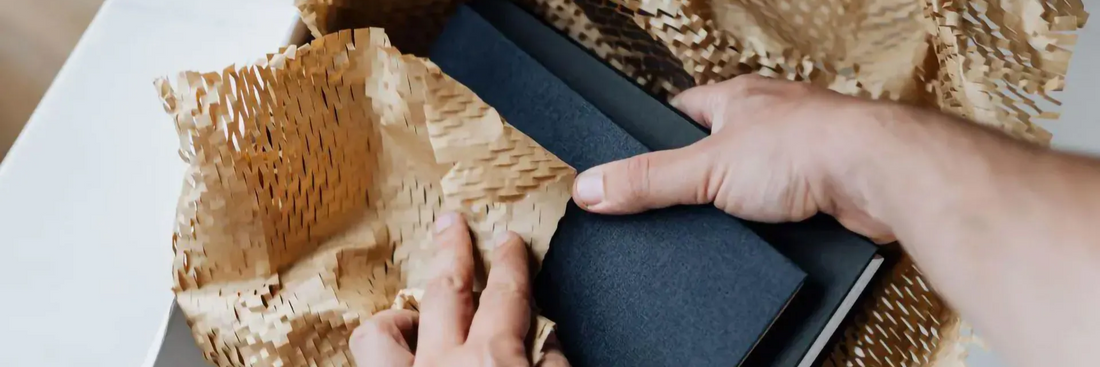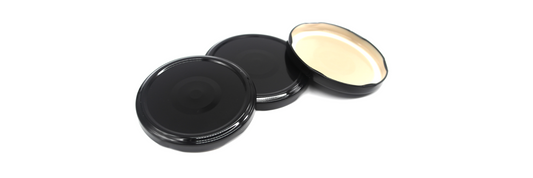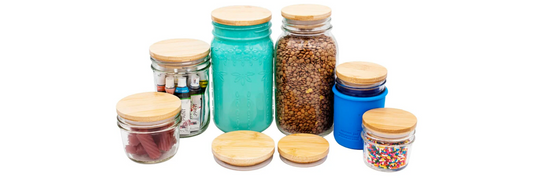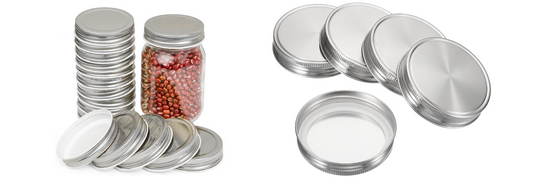In this article, we'll explore various eco-friendly alternatives to bubble wrap, including biodegradable, recyclable, and reusable options. We'll also discuss how these alternatives can benefit your business and why making the switch is a necessary step toward sustainable operations.
- What is Bubble Wrap? Is Bubble Wrap Recyclable?
- Foam vs. Bubble Wrap: Which Is Better for Packaging?
- Anti-Static Bubble Wrap: What It Is and When to Use It
- Bubble Wrap Sizes and Their Uses: A Comprehensive Guide for Packaging
-
What Is Crinkle Paper? Types of Crinkle Paper Used For Packaging & Shipping
Why Choose Eco-Friendly Packaging?
Before diving into the alternatives, let's first understand why eco-friendly packaging is essential.
Environmental Impact
Traditional bubble wrap is made from polyethylene, a type of plastic that takes hundreds of years to decompose. It contributes to plastic pollution and fills up landfills, harming ecosystems. Switching to eco-friendly packaging reduces this environmental burden.
Consumer Demand
Sustainability is now a key purchasing factor for consumers. According to surveys, a growing number of customers prefer businesses that prioritize eco-friendly practices. Offering green packaging solutions can help improve brand loyalty and attract more environmentally conscious consumers.
Cost-Efficiency in the Long Run
While some eco-friendly alternatives may have higher upfront costs, they often lead to savings over time. By reducing waste and improving your brand’s reputation, sustainable packaging can increase customer satisfaction and retention.
Eco-Friendly Alternatives to Bubble Wrap
Here are some of the most popular eco-friendly alternatives to traditional bubble wrap, each offering unique benefits for protecting products during shipping and storage.
Paper Padding
Paper padding (also known as paper void fill) is an excellent substitute for bubble wrap. It's made from recyclable and biodegradable paper, making it one of the most sustainable choices.
- How It Works: The paper is crumpled or shaped to create padding that cushions and protects items inside packages.
- Best Uses: Ideal for filling void spaces, wrapping fragile items, and providing cushioning for light to medium-weight products.
-
Pros:
- Fully recyclable and biodegradable.
- Can be reused multiple times.
- Comes in various thicknesses for different levels of protection.
-
Cons:
- May not provide as much shock absorption as bubble wrap for heavy or highly fragile items.
Biodegradable Air Pillows
Biodegradable air pillows are similar to traditional plastic air pillows but are made from eco-friendly materials like cornstarch or recycled plastic. They offer excellent protection while being better for the environment.
- How They Work: Air pillows are inflated to fill void spaces in packages, ensuring that items don't shift during transit.
- Best Uses: Suitable for protecting large or delicate items in transit, especially for lightweight and bulky products.
-
Pros:
- Made from biodegradable or compostable materials.
- Lightweight, reducing shipping costs.
- Provide excellent cushioning.
-
Cons:
- May not be as versatile as paper padding for wrapping small or irregularly shaped items.

Molded Pulp
Molded pulp is made from recycled paper, cardboard, or other natural fibers. It can be shaped into custom forms to fit products and provide superior protection.
- How It Works: Molded pulp is formed into specific shapes (such as trays or inserts) that cradle and protect items.
- Best Uses: Often used for electronics, glassware, and other fragile items that need custom-fit protection.
-
Pros:
- Biodegradable and recyclable.
- Provides sturdy and custom protection for fragile items.
- Reduces the need for additional void fill or packaging materials.
-
Cons:
- Requires custom molds, which can increase upfront costs.
- Bulky and not as flexible for different product types.

Corrugated Bubble Wrap
Corrugated bubble wrap is made from recycled cardboard and serves as a sustainable alternative to plastic bubble wrap. It provides similar cushioning properties and can be used to wrap or pad items.
- How It Works: Corrugated wrap is made by cutting or shredding cardboard into flexible layers, creating a cushioning effect similar to bubble wrap.
- Best Uses: Ideal for wrapping items, filling voids, or layering between fragile objects.
-
Pros:
- Recycled and recyclable.
- Durable and provides effective protection.
- Flexible and easy to wrap around different product shapes.
-
Cons:
- Not as soft as plastic bubble wrap, so it may not be suitable for delicate surfaces.

Biodegradable Foam Peanuts
Biodegradable packing peanuts are a direct alternative to traditional Styrofoam peanuts, which are non-biodegradable and harmful to the environment. These eco-friendly peanuts are made from starches, such as cornstarch or wheat, and dissolve in water.
- How They Work: Like traditional foam peanuts, these are used to fill empty spaces in packages and provide cushioning to prevent movement.
- Best Uses: Best for protecting lightweight items in transit, especially in larger boxes with extra space.
-
Pros:
- 100% biodegradable and compostable.
- Lightweight and cost-effective for shipping.
- Easy to use and dissolve in water, making them non-toxic to the environment.
-
Cons:
- May not provide as much protection for heavy or highly fragile items.
- Can be more expensive than traditional foam peanuts.

Honeycomb Paper Wrap
Honeycomb paper wrap is a versatile and eco-friendly alternative to bubble wrap, often used for wrapping fragile items like glassware or ceramics. It’s made from kraft paper, formed into a honeycomb structure that offers cushioning without plastic.
- How It Works: The paper's honeycomb structure expands to create a protective layer around items, offering shock absorption similar to bubble wrap.
- Best Uses: Wrapping fragile or irregularly shaped products.
-
Pros:
- Biodegradable, compostable, and recyclable.
- Offers excellent cushioning for fragile items.
- Lightweight and reduces packaging waste.
-
Cons:
- May not provide enough protection for very heavy or sharp-edged items.
Reusable Fabric Wraps
For businesses looking for a sustainable, zero-waste option, reusable fabric wraps made from organic cotton or other sustainable materials are a great choice. These wraps are often used in premium packaging to add an eco-friendly and elegant touch.
- How They Work: Items are wrapped in fabric, which can be tied, folded, or secured around the product. These wraps are reusable and can be part of a brand's eco-friendly initiative.
- Best Uses: Luxury or artisanal products that need eco-friendly and reusable packaging solutions.
-
Pros:
- Zero waste and reusable.
- Adds a premium and personalized touch to packaging.
- Ideal for gift packaging or boutique businesses.
-
Cons:
- Higher upfront cost.
- Not suitable for large-scale packaging needs or for heavy items requiring maximum protection.

Benefits of Eco-Friendly Packaging for Businesses
Switching to eco-friendly alternatives to bubble wrap offers significant advantages for businesses across industries:
Improved Brand Reputation
More than ever, consumers are paying attention to how businesses handle sustainability. By incorporating eco-friendly packaging into your operations, you send a clear message that your company cares about the environment and is committed to reducing its carbon footprint.
Cost Savings in the Long Run
While some eco-friendly options may have a higher initial cost, they can lead to long-term savings. Reusable and recyclable packaging can reduce overall waste and disposal costs, while biodegradable options can prevent fines or penalties related to improper waste management.
Customer Satisfaction
Consumers are willing to pay more for sustainable packaging, especially if it aligns with their personal values. Offering green packaging solutions can lead to increased customer satisfaction and loyalty, improving your bottom line.
Compliance with Environmental Regulations
Many countries and regions have implemented regulations on plastic packaging waste. By adopting eco-friendly alternatives, businesses can ensure compliance with these laws and avoid potential legal repercussions.
FAQs About Eco-Friendly Packaging Alternatives
Is Eco-Friendly Packaging More Expensive Than Traditional Packaging?
Eco-friendly packaging can be slightly more expensive upfront, but many businesses find that the long-term benefits, such as increased customer loyalty and cost savings, outweigh the initial investment.
Can Biodegradable Packaging Really Break Down In The Environment?
Yes, biodegradable packaging made from materials like cornstarch or paper can break down in natural environments, unlike traditional plastic bubble wrap which takes hundreds of years to decompose.
How Do I Know Which Eco-Friendly Packaging Alternative Is Best For My Business?
Choosing the right packaging depends on the type of products you ship, your budget, and your sustainability goals. Paper padding is great for lightweight items, while molded pulp may be necessary for fragile or custom-fit products.
Can I Use Eco-Friendly Packaging For Heavy Or Fragile Items?
Yes, many eco-friendly alternatives, such as honeycomb paper wrap or biodegradable air pillows, are designed to provide excellent cushioning and protection for fragile or heavy items.
Conclusion
Switching to eco-friendly alternatives to bubble wrap is a crucial step for businesses aiming to reduce their environmental impact while meeting consumer demand for sustainability. Whether you choose paper padding, biodegradable air pillows, or molded pulp, there are plenty of options that provide the protection your products need while helping the planet.









